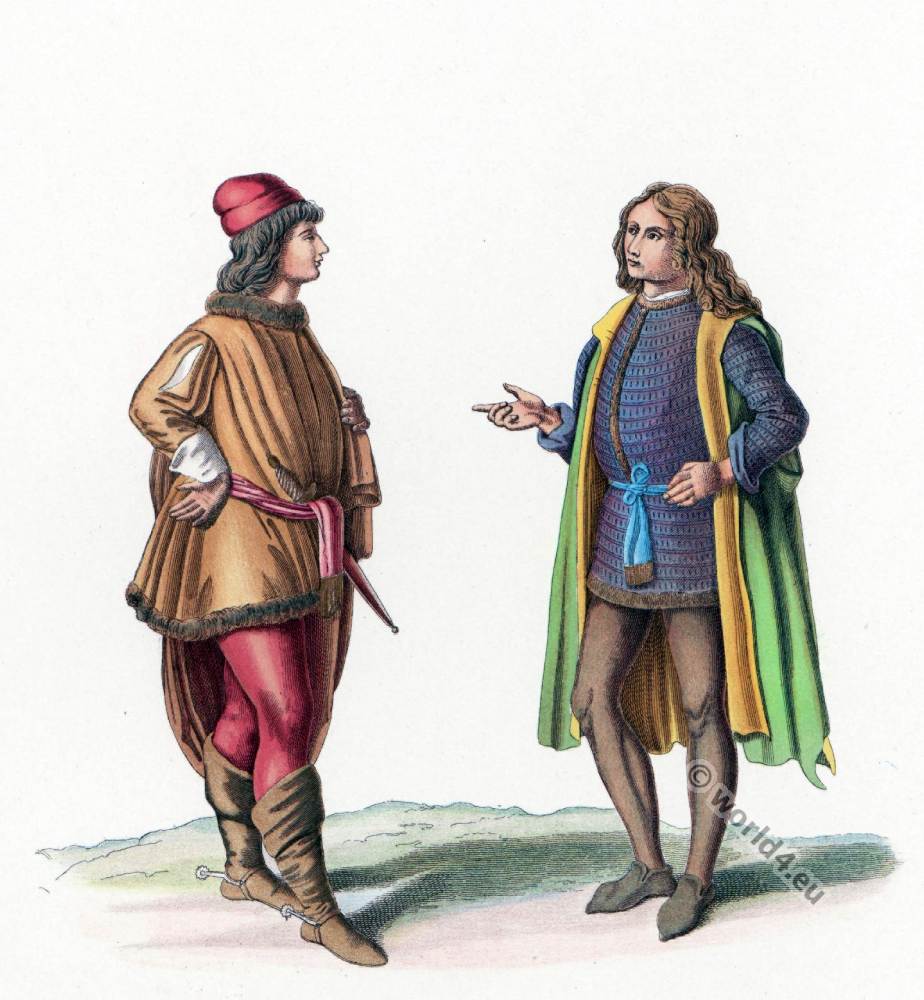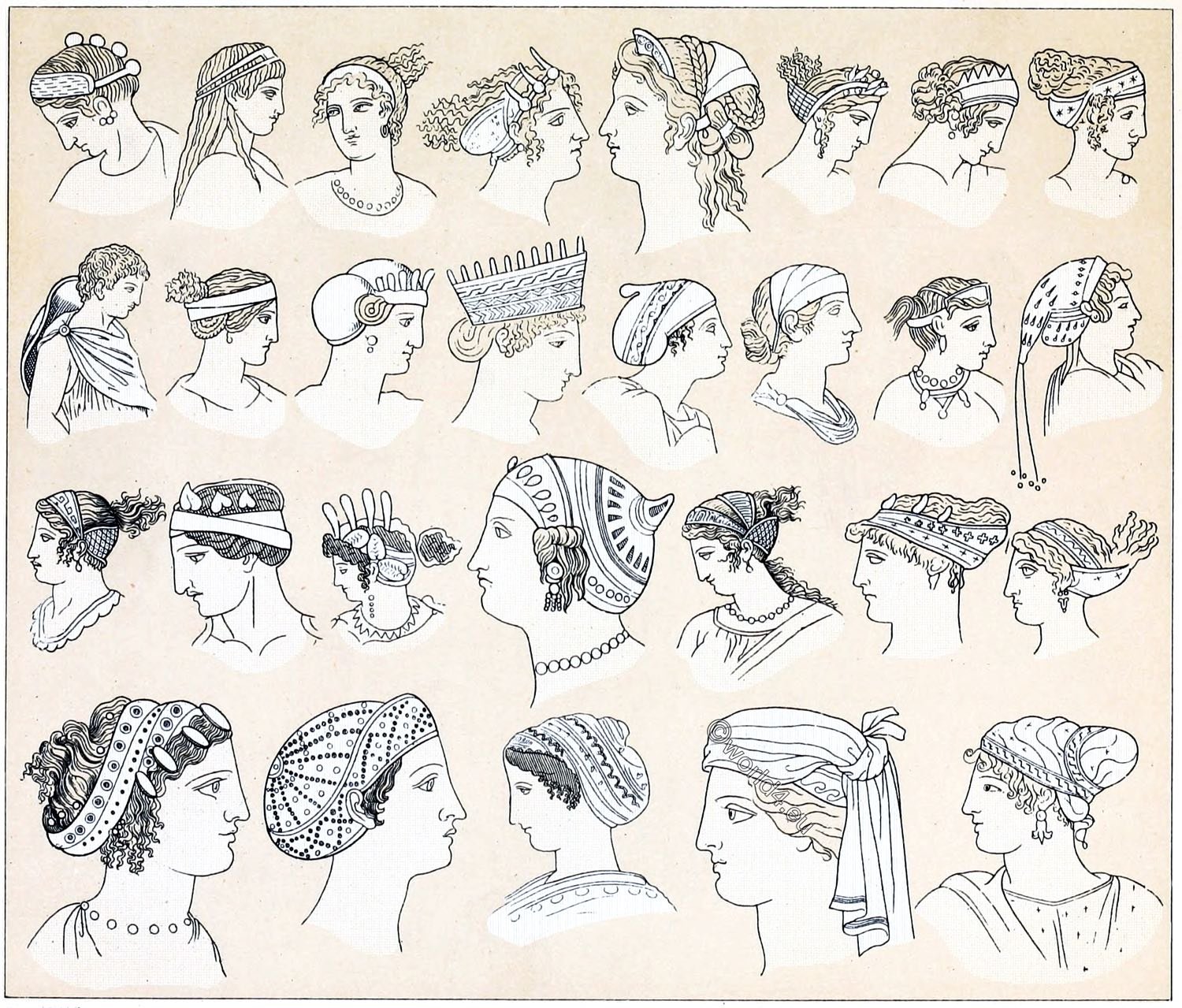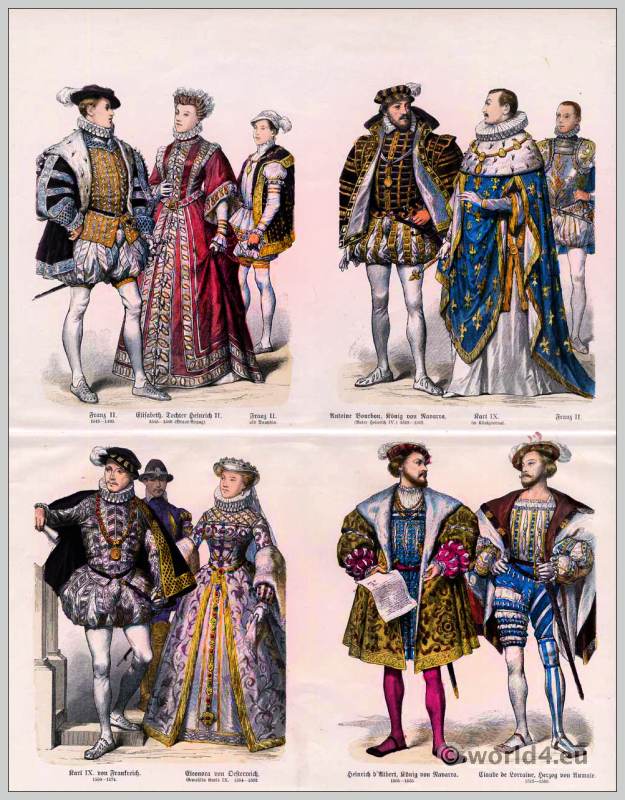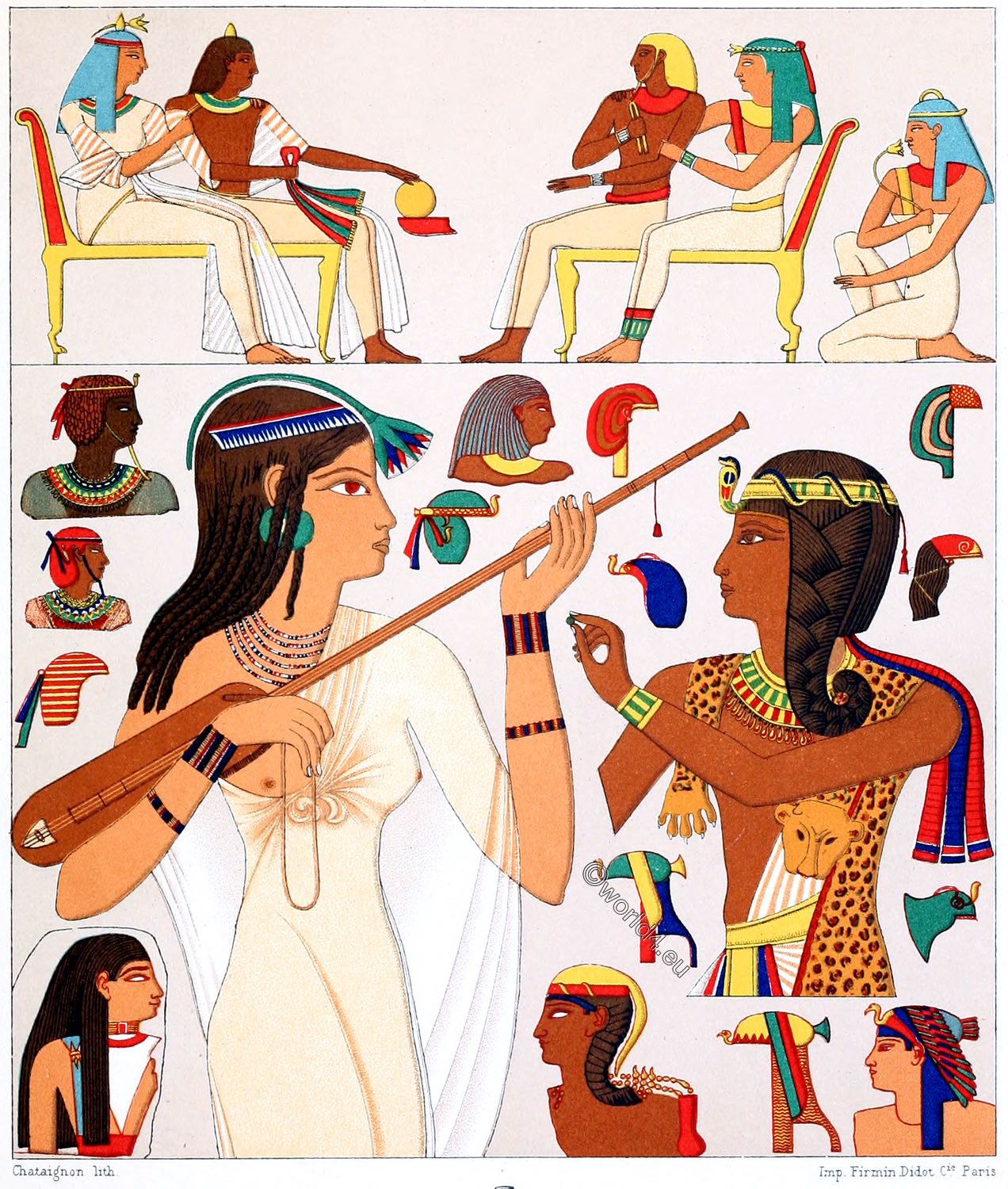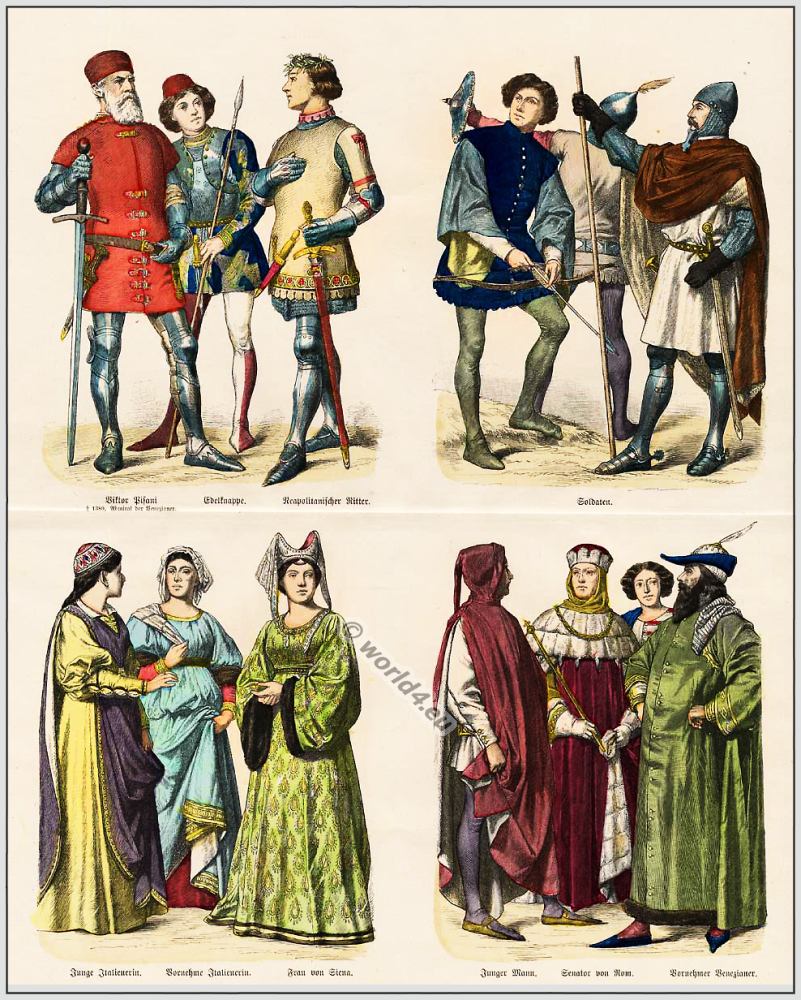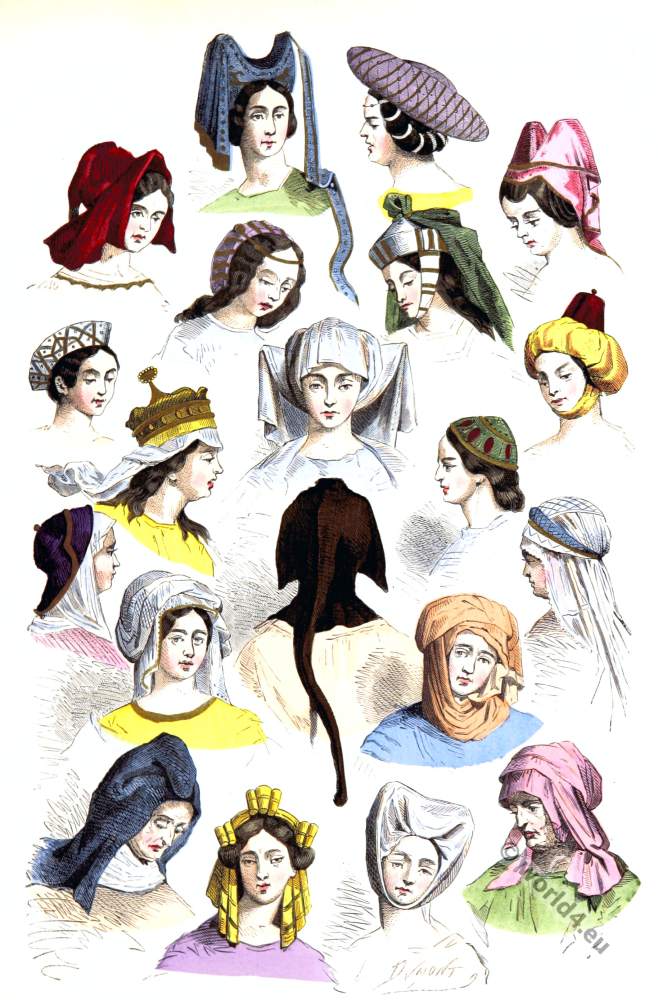
7, 8,
1a, 2,
1, 5,
3, 4, 1b, 6,
EUROPE XVI. CENTURY. ITALY. FEMALE COSTUMES AND HEADGEAR.
No. 1. net of gold threads on a base of gauze set with pearls. Detail see no. 1b. Browband of red silk with fluttering ends and decorated with golden agraffes and pearls. Detail see no. 1a. (Portrait of Leonardo da Vinci in the Ambrosiana in Milan).
No. 2. bonnet of red velvet with a net of gold bands embroidered in black and sewn with pearls. (Based on the picture of an Anonymus in the Brera in Milan.)
No. 3. children’s bonnet of a similar type of gold fabric with a network of black velvet ribbons and set with rubies, sapphires and pearls. (After a votive picture of Lodovico Maro by Bernardo Zenale (1460-1526) in the Brera in Milan.
No. 4. lady with a headgear in the shape of a net. Made of a light fabric held by a wire frame. The bust cloth is made of transparent muslin and decorated with red stripes. Velvet dress. Short bodice. Slit sleeves with small and long slits, which are nested together by silk ribbons.
No. 5. lady with a round bulge in which the hairs from the neck have been tucked in. The transparent breast cloth is embroidered white on white. The short bodice is embroidered with gold. The sleeves are taped between shoulder and elbow to form large puffs. (No. 4 and 5 after a painting by Nicola Appiano in the Brera in Milan).
No. 6. Golden agraffe with an emerald.
No. 7. From a manuscript of the National Library of Paris, No. 876, which was made for Charles VIII. Costumes from the beginning of the XVI century. Vecellio, in his collection published in 1590 (Degli habiti antichi ed moderni di diversi parti del mondo), represents a costume similar to the one worn in Milan in the past. The robes closed tightly together at the back and had short waists. Depending on the status of the person, they were made of gold, silver or coloured silk. In our figure a strip of gold brocade alternates with a strip of silver brocade. The skirt ends in a two foot long train. The sleeves consist of two loose parts, which are connected to the shoulder and to each other by silk ribbons. Under these and through small slits the fine wrinkled shirt is revealed. At times the shirt sleeve hung down to the knees.
The hair, enclosed by a headband, is parted smoothly (the custom of wearing curly hair from the ears to the forehead did not appear until 1550) and is of natural colour. The hair falls down to the back, braided together. Around the neck, ladies wore necklaces of pearls, round pieces of silver and coral. The very fine stockings (of white filet de Florence) were embroidered. Later on, tight, jersey-like breeches of silk were worn with them.
No. 8. From the same manuscript as No. 7. It appears to be the costume of a young girl of marriageable age. “The nubile girls of the past, says Vecellio, wore their hair long and falling down their backs. Their gown without bodice was not very wide,” The skirt worn by this girl is of the highest quality. The cut was called à la romana. It left the leaf of the foot and the slippery shoes with thick soles. The puffy sleeves of the petticoat are visible through wide openings at the sides.
In the “Blätter für Kostümkunde, Neue Folge, I. Band” (Sheets for costume studies, new episode, volume I Berlin, 1876-1878, F. Lipperheide), A. von Heyden published an extremely thorough and richly illustrated study of female headdress during the Renaissance in Florence.
Source: History of the costume in chronological development by Albert Charles Auguste Racinet. Edited by Adolf Rosenberg. Berlin 1888.
Related
Discover more from World4 Costume Culture History
Subscribe to get the latest posts sent to your email.

